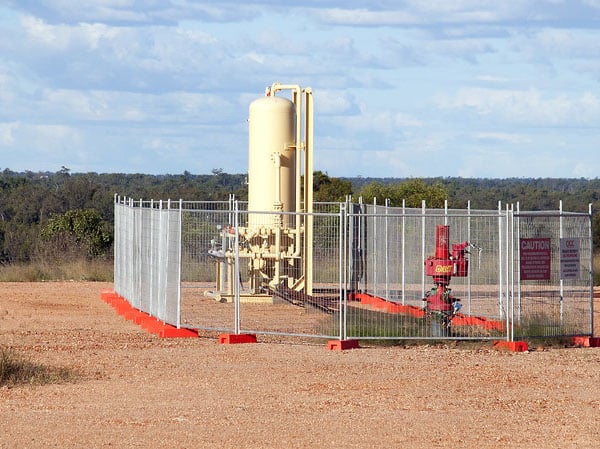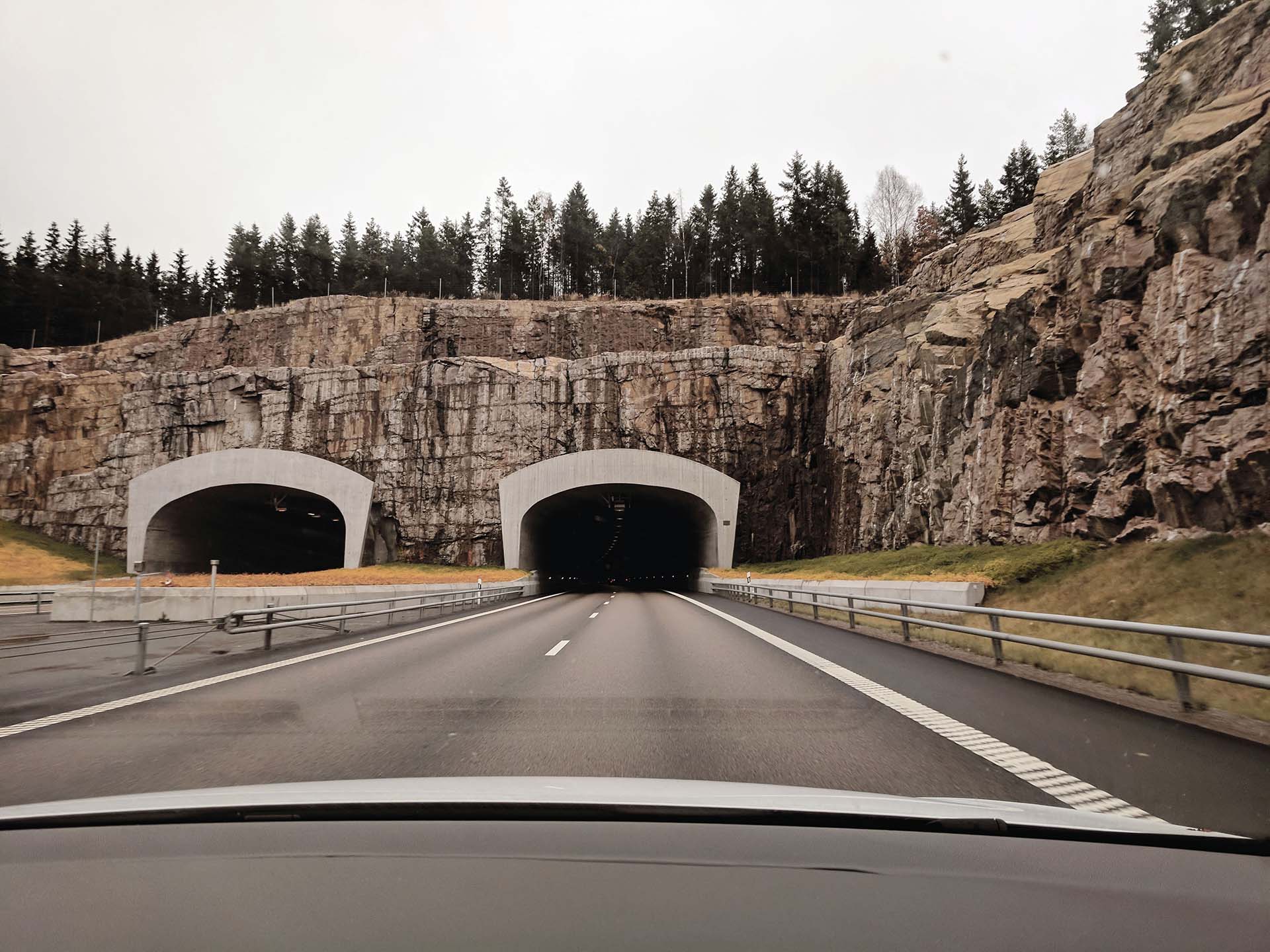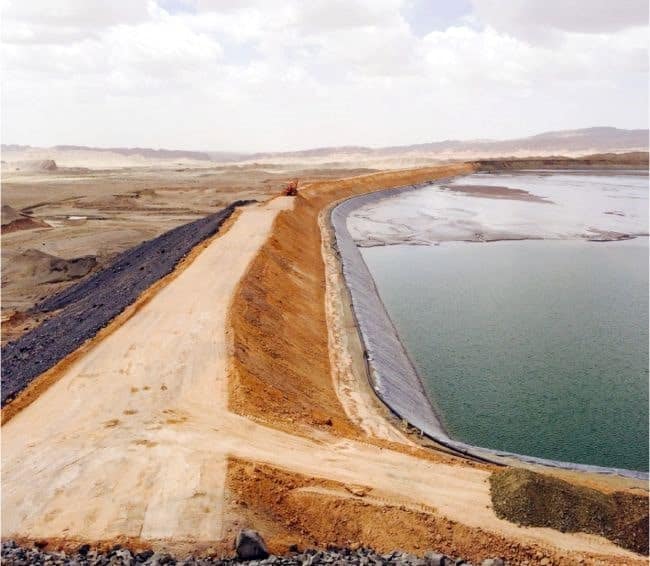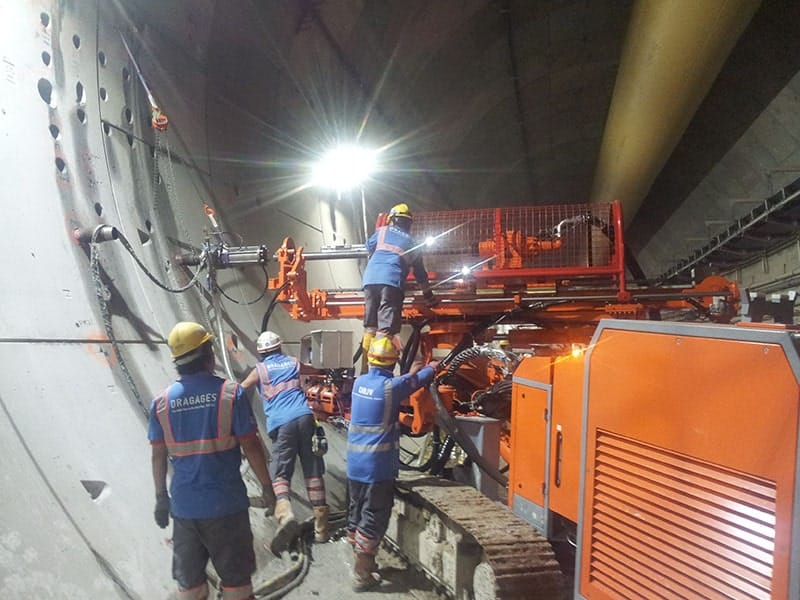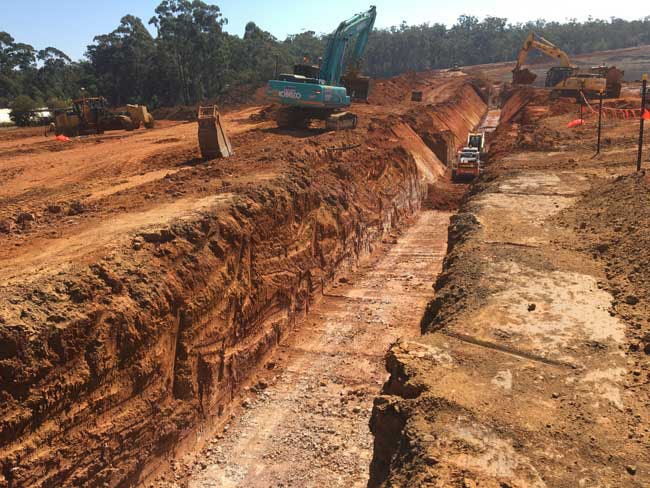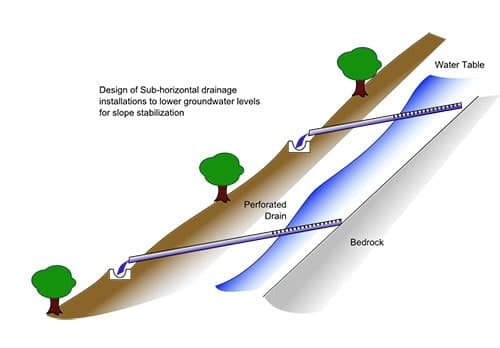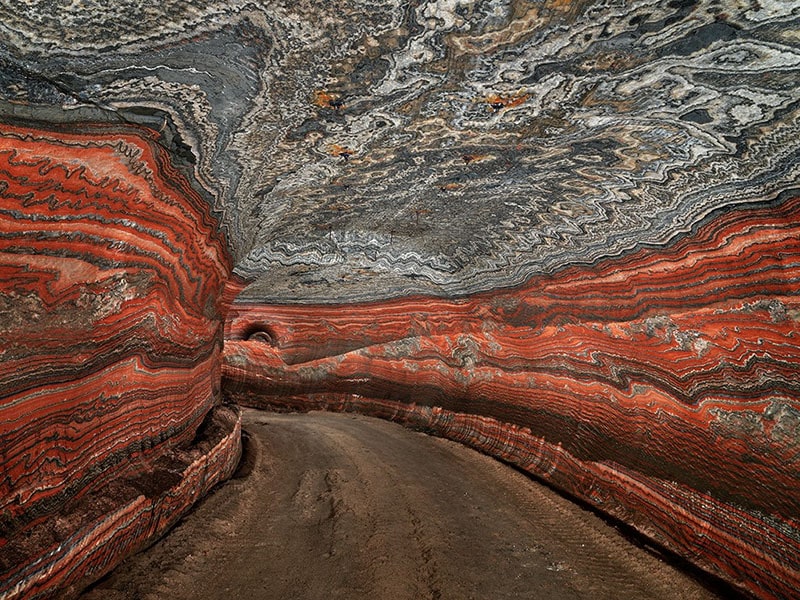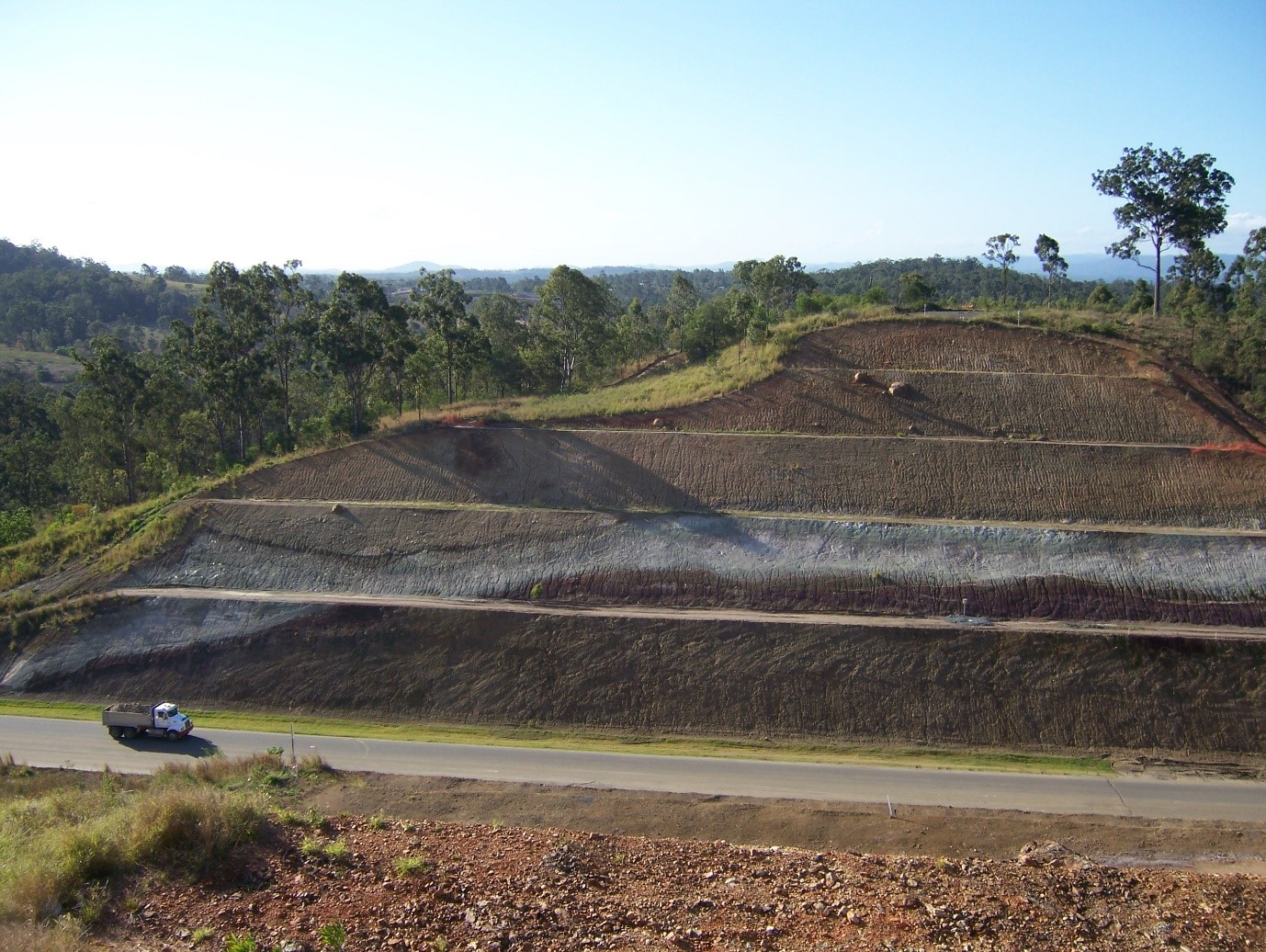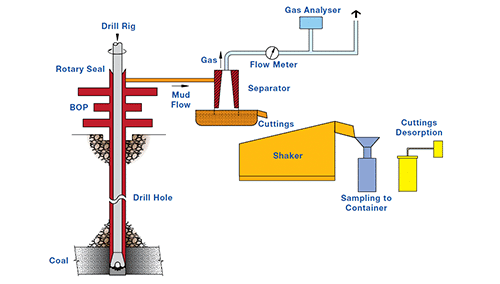The fracture closure pressure deduced from the period after pumping ceases is an indication of the stress across the fracture plane. This concept is shown in Figure 1.
If multiple joint sets exist and if each of these could be individually straddled and tested, it would be theoretically possible to obtain the stress across each of these and thus build some elements of the stress tensor. This is practically impossible in most cases because it is seldom possible to straddle a single fracture or fracture set. In addition, the hydrofracture fluid will propagate from one fracture set to another. This makes the analysis of the pressure decline for a unique fracture closure pressure difficult.
If multiple fractures are straddled and pressurised until an increase in flow rate indicates that fracture opening has occurred, then subsequent examination of the test zone by acoustic televiewer may sometimes reveal which fracture has opened. This is not always the case though. Figure 2 shows a problem example – one, or more of these fractures opened during hydrojacking.





